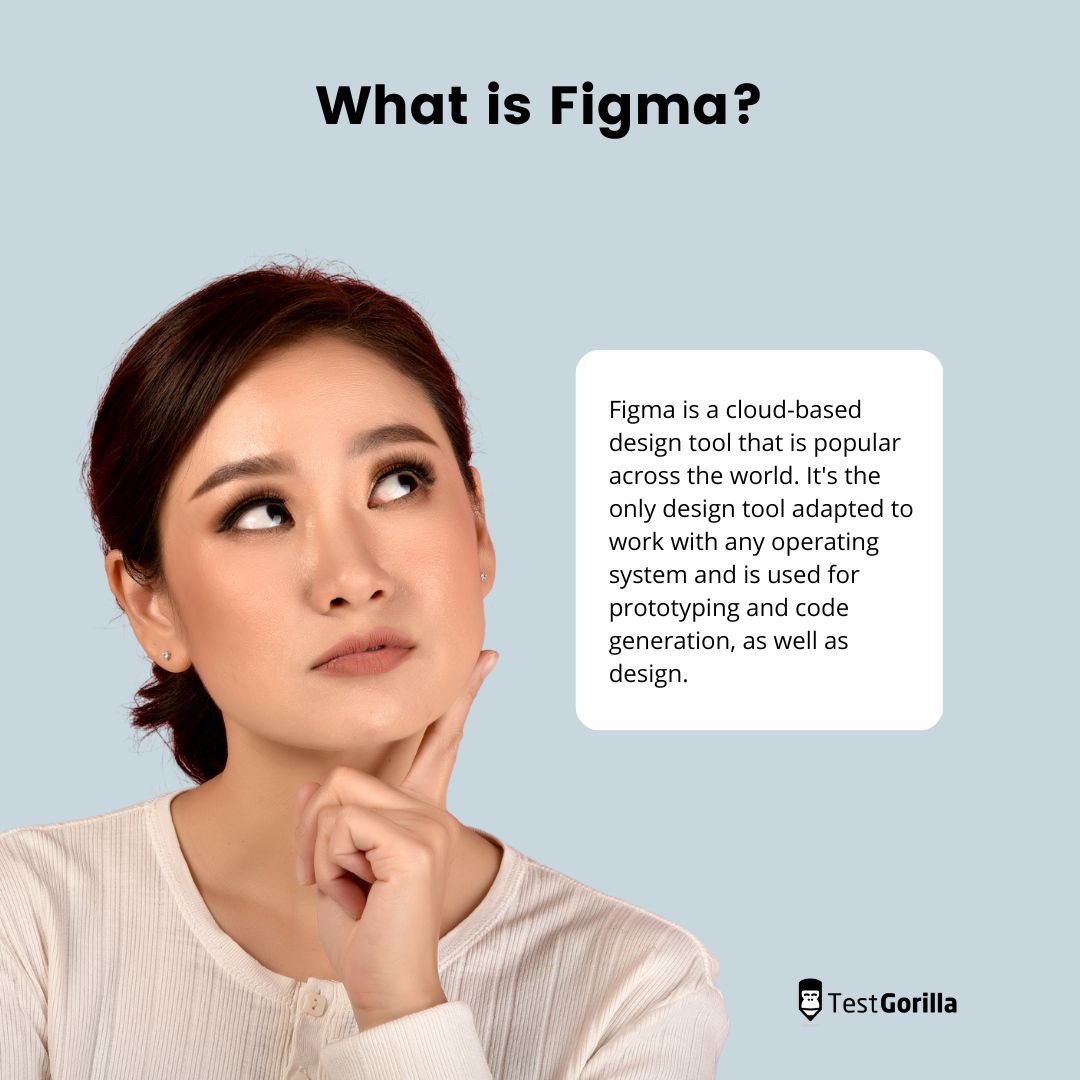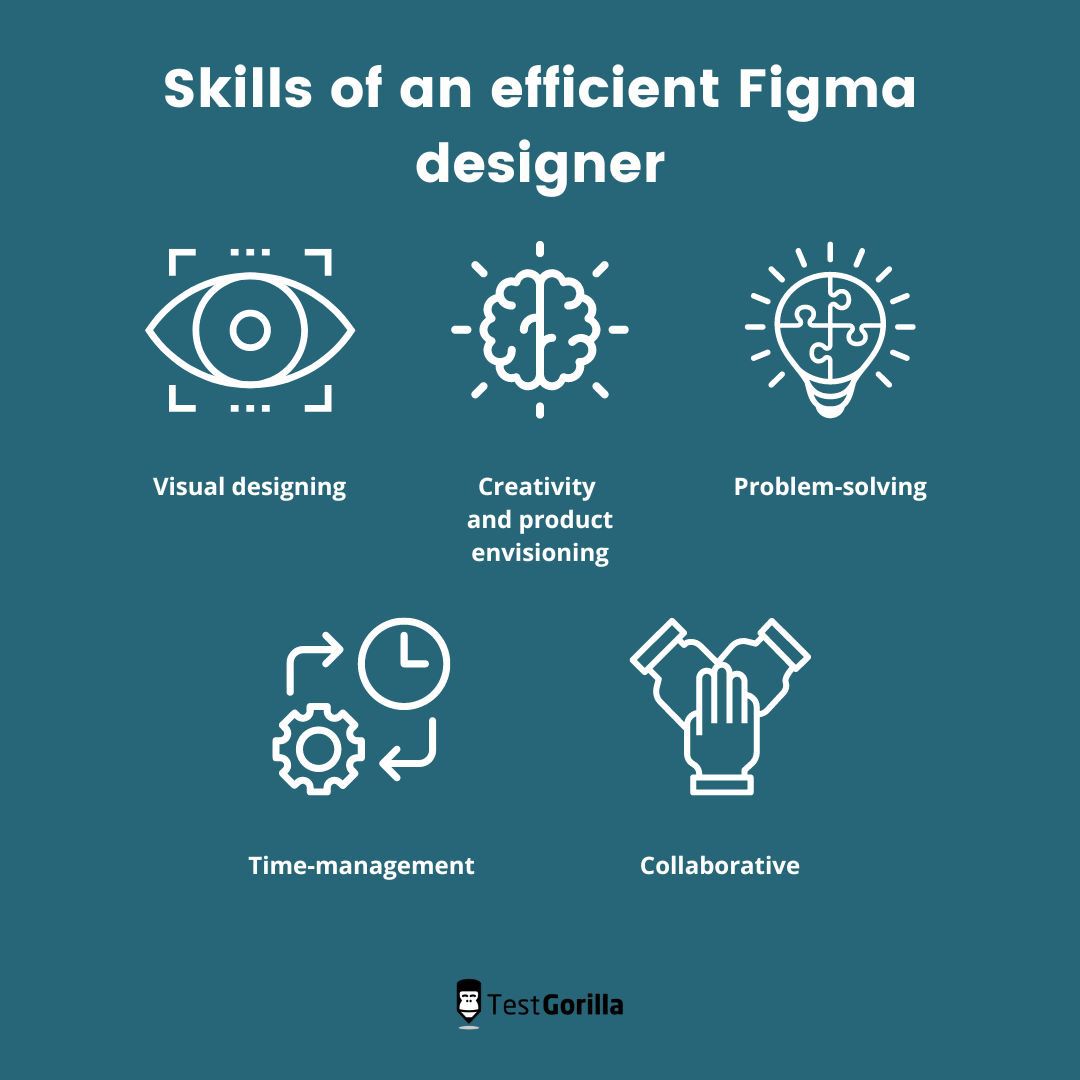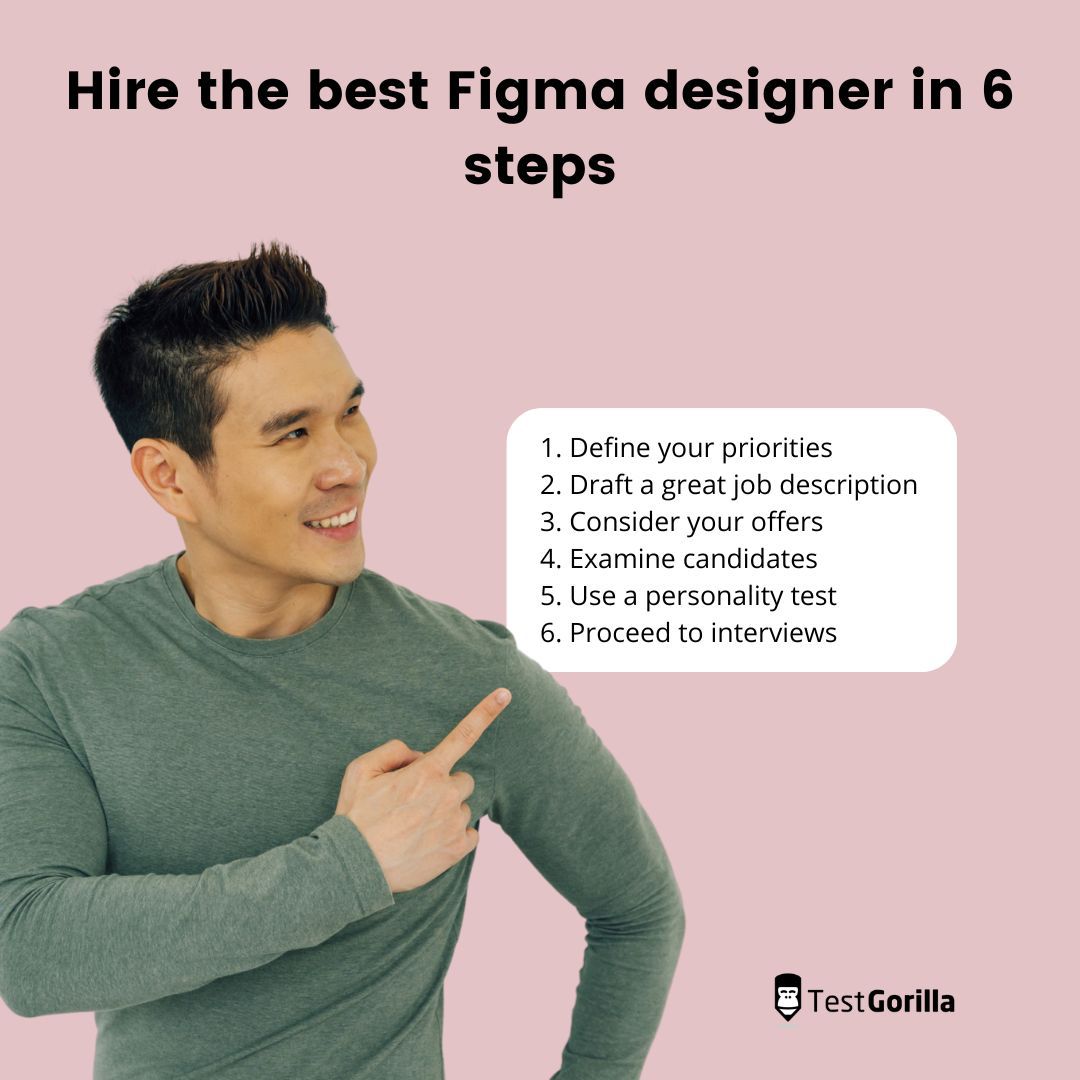Harnessing the skills of a talented Figma designer can raise your company’s reputation and help you achieve your objectives. These designers lay the building blocks for a company’s image, from conceiving ideas to creating designs.
Recruiting Figma designers can be tricky, especially without the appropriate recruitment techniques. Furthermore, checking candidates’ suitability for the role requires meticulousness including a good Figma designer skills test.
This article will reveal the most effective process of testing and recruiting the best Figma designer for your company.
What is Figma?
The Figma platform is a cloud-based tool for designing and creating practically anything. It helps in creating logos, websites, and applications. It’s an excellent user interface (UI) or user experience (UX) application for prototyping, code-generation, and designing.
Figma was developed only about a decade ago but has made impressive achievements. Today, about 235 countries and territories use it around the world.
Due to its fast-growing adoption, it is a great tool for design and publicity. Because of its advanced features, it’s one of the best platforms for collaboration. It’s also the only design tool adapted to work with any operating system with a browser.
Figma possesses features that make it easy to operate and preferable to other design tools. One of these features allows team leaders to check up on their teams and receive notifications each time the design is tweaked.
Who is a Figma designer?
A professional Figma designer applies their skills to design, create, and manage applications, websites, logos, and any other project related to web design. Figma developers have a firm grasp of UI/UX design and should be able to use their skills efficiently.
Figma pros range from junior designers and engineers to Figma product managers and team leaders. These specialists work together to produce ingenious designs for their companies.
The population of Figma designers worldwide is high due to how successful the tool has become. However, to find the best Figma designer for your company, you must look for specific skills and qualities.
Skills of an efficient Figma designer
The best Figma professionals know your company’s expectations and work to meet those standards.
To do so, they possess certain skills necessary for their job posts:
1. Visual designing skills
One of the platform’s advantages is its visual design capabilities, so a Figma designer should have skills in this field. They need to know UI/UX design principles and be able to apply those to their operations on the platform.
Figma UI and UX designers know how to set up a design and bring it to life according to your company’s requirements.
2. Creativity and product envisioning
In addition to visual design skills, Figma developers can envision a project, picture how they want it to turn out, and bring that vision to life. They think up ideas and present them in the best way possible.
3. Problem-solving skills
While developing their ideas, Figma designers will inevitably encounter problems. They must be able to tackle these problems and still deliver top-notch services, working hand in hand with their teams to provide solutions.
4. Time-management skills
It’s common knowledge that time management is crucial for professional jobs. Figma developers need to be able to manage different projects in as minimal time as possible while still delivering high-caliber work.
5. Collaborative skills
Figma designers must be able to work with team members because the platform is known for its collaborative features. A Figma team consists of Figma project managers, engineers, and Figma UX/UI designers who work together to create the best applications.
Hence, for them to work together, each team member must be willing to put in the effort, cooperate, take the initiative, and make corrections where necessary.
The best insights on HR and recruitment, delivered to your inbox.
Biweekly updates. No spam. Unsubscribe any time.
How to hire the best Figma designer for your company
Now you know what to look out for in a Figma designer. Here are some steps to finding the best one for your company:
1. Define your priorities
This step aims to discern the needs of your organization. It helps to carefully consider what is lacking before determining what you want in a Figma developer.
In this case, you need to know the level of expertise, experience, or talent your company wants before starting the recruitment process.
2. Draft a great job description
A job description lists your organization’s needs so candidates can see if they meet your requirements. An effective job description is informative, enables prospective applicants to consider how well they fit the profile and attracts suitable candidates.
3. Consider your offers
It is important to state the benefits of working at your company, such as an excellent working environment and good learning opportunities, and consider the average pay of a designer. Making attractive offers draws the attention of high-end Figma designers.
4. Examine candidates
Pre-employment tests are an ideal way of checking the skills of Figma designers. Incorporating a Figma designer test into your recruitment will reduce the time spent sorting through applicants and ensure you evaluate each candidate thoroughly.
TestGorilla offers a pre-employment test that evaluates candidates’ abilities to create, set up, and manipulate Figma to yield the best results for your organization.
5. Add a personality test to your recruitment
A personality test evaluates a candidate’s compatibility with the job post. It improves your recruitment by ensuring that those who pass have the personable skills your organization needs and will become a positive addition to the team.
6. Proceed to interviews
The next step is to carry out interviews. This process lets you see the candidate in person and judge their suitability for the job based on their demeanor, verbal skills, and self-expression. While carrying out this step, drafting your interview questions beforehand is crucial.
Online tests are the perfect addition to your recruitment
A pre-employment assessment like TestGorilla’s Figma designer test effectively evaluates candidates based on skill level and software knowledge. The test reduces the stress of scanning countless resumes and decreases the chances of hiring the wrong individual.
Our extensive test library includes personality tests you can use to assess your candidates further to find the best fit for your company. Begin your journey by creating a free account today.
Related posts
You've scrolled this far
Why not try TestGorilla for free, and see what happens when you put skills first.

















